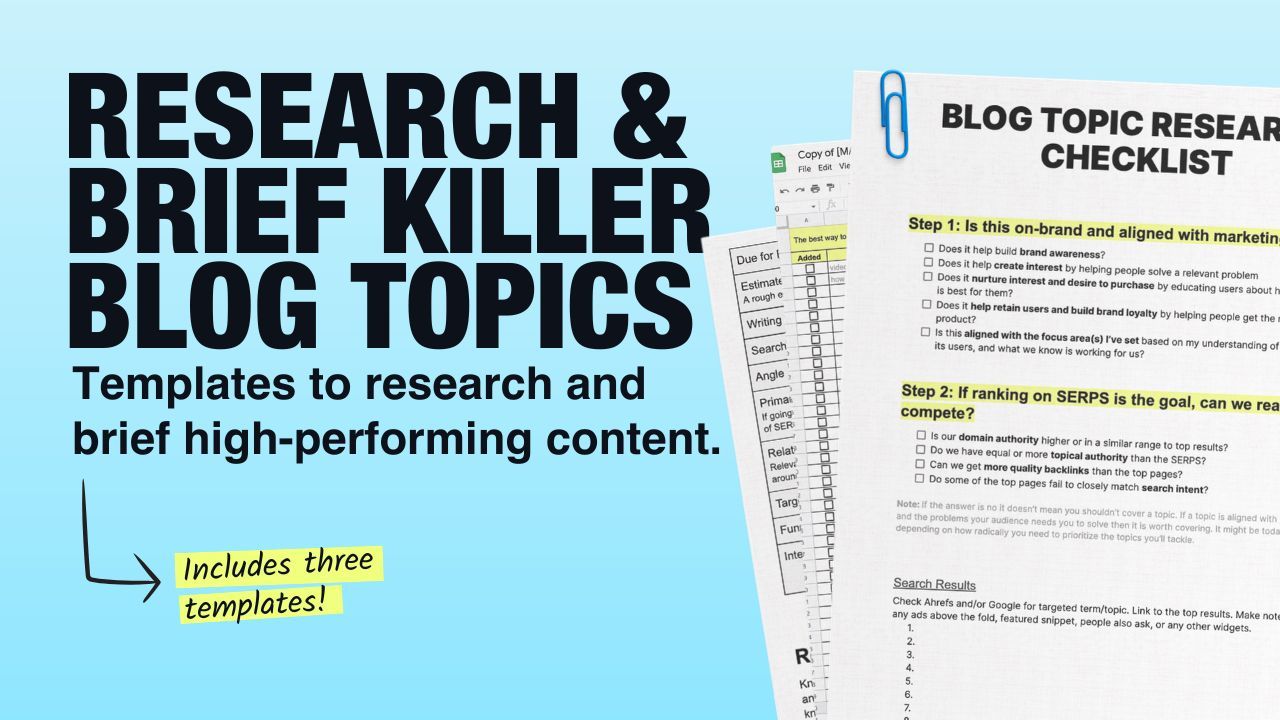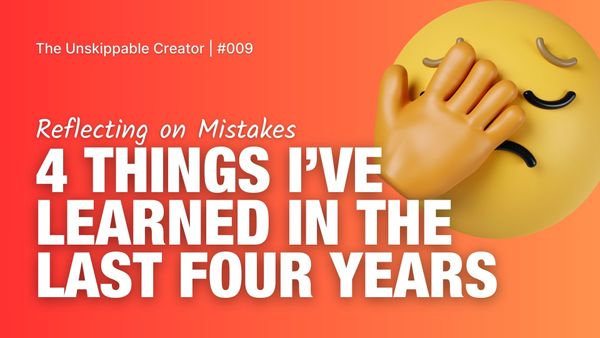Ranking on search results is not automatically synonymous with exceptional content. You can be the least crappy piece of crap content yet rank because in an ocean of good enough content one that's 5% better can outrank the others by just a hair.
Bad content is everywhere the way burnt-flavored coffee is everywhere like the crusty office Keurig machine nobody ever wipes off yet still drinks because well...it's there.
Meanwhile right outside your office is a local coffee roaster who carefully sources where their beans come from, has mastered their craft, and is invested in delivering a top-notch customer experience. Your work bestie just went. "I can't believe I've been drinking burnt and water capsule coffee the entire year I've been here" she excitedly says.
People remember things that break the pattern of what they’ve been used to the same way they’ll remember and go back to 'that place' with 'that thing' they really loved.
I didn’t know anything about growing a blog three years ago. Yet I was able to take VEED’s zero-traffic blog to over 157,000 organic monthly visits. What I'm most proud of is how our readership creates 4X more videos with VEED than users who’ve never explored our blog.
To make content that people remember you need an airtight research process so you can use quality as the knife that'll cut through the noise.
Take a peak at the blog topic research checkpoints I've set for myself and take what you want for when you write your next piece (or hand it off to a writer).
Step 1: Brand and Goals Alignment
It doesn’t matter how much traffic potential something might have if it doesn’t align with your brand, your content’s goals, and whatever problems/audience segments you’re looking to focus on in a particular quarter or year.
When I have a topic to consider I like to ask myself this:
- Does it help build brand awareness?
- Does it help create interest by helping people solve a relevant problem
- Does it nurture interest and desire to purchase by educating users about how our product is best for them?
- Does it help retain users and build brand loyalty by helping people get the most out of our product?
- Is this aligned with the focus area(s) I’ve set based on my understanding of company goals, its users, and what we know is working for us?
Step 2: If ranking on SERPS is the goal, can you realistically compete?
There are three main things I check out first before going any deeper. If you answer yes to all or most of these you have a shot.
- Do you have the domain and topical authority to snag the top spot?
- Can you build more backlinks than the top results?
- Are any other results failing to nail search intent?
Related Terms & Content Gap
If you use a tool like Ahrefs you can run a content gap and/or look at related terms to find terms that will shape your outline and capture relevant search volume.
Look for terms that might be a clue for an FAQ or entire header section you might need to consider for your outline (e.g. filter for keywords that include terms like how, what, best, ideas, tips, etc).
I suggest not trying to plug in these terms until you finish your first draft . Not only will you find you naturally included some of them but when you find a home for anything left over it's much easier and will read better.
Step 3: Competitor Content
Below are the points I review to inform myself:
| Factor | Description |
|---|---|
| Angle | What angle can you bring to the content |
| Search Intent | If search intent wasn’t nailed by SERPS take note on why and how it could be better addressed. |
| Audience | Does your competitor’s content clearly speak to a particular audience type? |
| Presented Knowledge | → What solutions/ideas are competitors sharing? → What kind of misinformation are your competitors delivering? → How can you address this in your own content angle? |
| Missing Knowledge | What are competitors failing to cover? |
| Authority / Credibility | → How are competitors displaying their authority/credibility when tackling a topic? → How can you do better? → What/who would your audience listen to |
| Visuals | → What kind of visuals are competitors making? → Do the visuals add value to the or are they basically just there to break up blocks of text. → What can you do better to add graphics (if needed) to better drive a point home? |
| Page Design/Structure | → If there’s a featured snippet, how is it formatted and where is it positioned? → What ideas/subtopics are being covered? → Where are those ideas positioned normally on the page across SERPS? → Do you think these ideas/subtopics are all worth mentioning? → If no (to above), remove from your outline planning. If yes, do you think they are in the right place on the page or could they be positioned elsewhere for better flow? |
| Video Results | If there’s a video search result for the topic you’re tackling and you have a YouTube channel: → Are there any blogs whose video also ranks?→ If so, what can you note about their content from the way both pieces were designed down to if they also embedded the video in the blog? → How long are the videos → What are the videos covering? → What are some relevant video result keywords you can use to design the chapters of your video? |
| Social Distribution | What are some distribution channels that make sense for the topic you’re covering? |
Step 4: Audience
Finally, I dig into what I know about our audience and their relationship with this topic.
Audience Questions:
- What’s their challenge?
- What do they already know about this topic?
- What are they seemingly unaware of?
- How have they tried to solve the problem before?
- Why didn’t it work?
- What matters most to them?
- How are they feeling?
Questions About Your Solution:
- What is your solution?
- What makes you credible to speak on this and how can you express that?
- What else can you do to add authority/crediblity to your content? (e.g. interviewing experts, doing original research)
- What are some potential or current objections people might have? Consider how the audience may have misdiagnosed their own problem due to online misinformation.
- How can you address those objections as the “content doctor” so to speak?
- How will your solution play to what matters most to the audience?
- What do you already know about paying customers who’ve solved this problem with our solution?
- What are some missed opportunities you think you can tackle to make this piece of content 10X better?
From here I have a solid idea of what the problem I'm solving is, why it matters, and how I will need to address for the best possible reader experience. I take what I've learned here and use it to build an outline and content brief.
And that’s all for this month. Thank you so much for reading!
⚡️ P.S. If you don't feel like making your template from scratch you can buy my research checklist, brief/outline template, and related terms checklist doc from my content shop. Save yourself the time to set up and get my ready-to-use template pack below.

Blog Topic Research Checklist & Brief Template
Save yourself the time and headache of delivering a disappointing blog that won't get you re-hired with my templates for assembling effective content briefs.
Included my templates for:
- Researching a Topic + SERPS
- Content Briefs/Outline
- Related Terms






